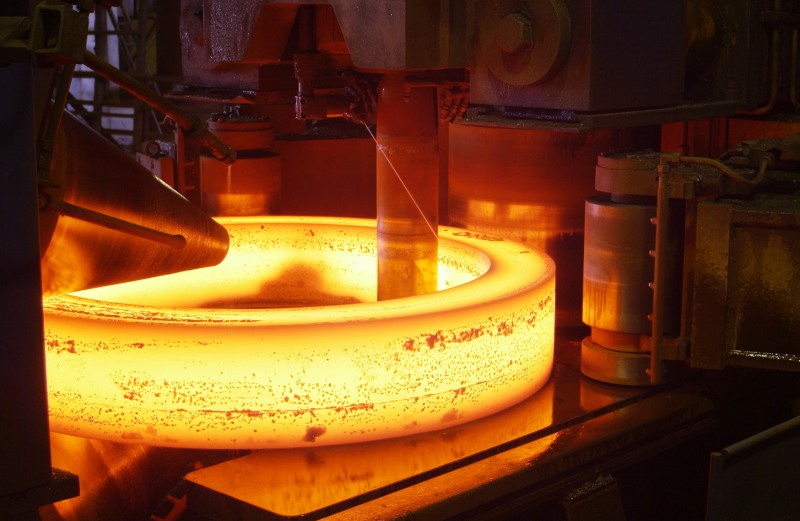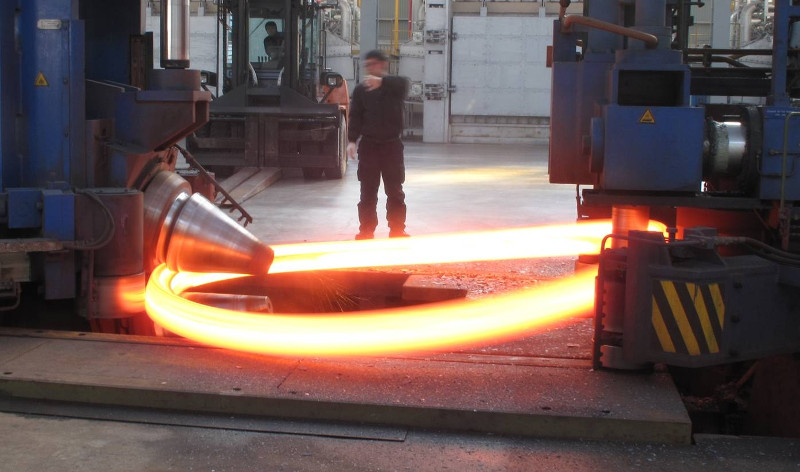Mathematical Modelling of Ring Rolling

Conventional ring rolling at Hammerwerk Erft.
Ring rolling is an important industrial metal forming process. It is used to make parts for a variety of purposes, from oil platform legs to aircraft engine parts. A ring rolling mill is shown above. The two vertical rolls in the centre of the image squeze the ring, thinning it. Two horizontal conical rolls (one of which can be seen on the left) prevent the ring from increasing in height, and so as it thins it must expand in diameter. A further two vertical support rolls help keep the ring centered. The ring is rolled warm, and is returned to the furnace for reheating several times during the rolling process. A video of this process is given below.
Video by QSC Forge.
After rolling, the ring is machined to remove unwanted material and leave the desired finished shape. Depending on the part, sometimes as much as 70% of the material is removed. If the ring could be rolled with a profile that was closer to the desired finished shape (for example, with a conical or L-shaped profile rather than rectangular), great cost and energy savings could be made. An attempt at making a ring with a non-rectangular profile is shown below; the process would appear to have fallen foul of an instability.

Rolling a ring with a non-rectangular cross-section, an instability has caused the ring to bend out of the horizontal (Korea Institute of Materials Science, KIMS).
Surprisingly little is known about the mechanics of ring rolling. Setting up a stable rolling process is largely done by informed trial and error. With recent interest in using computer control to make more diverse shapes with more exotic metals using less energy, simple quick-to-compute models of the process are needed. Such models could be used within a control loop to control the rolling mill, and can therefore afford to be approximate. Models could also be used to analyse the stability of ring rolling.
This project would involve deriving a simple mathematical model of conventional (rectangular cross-section) ring rolling. This is likely to involve modelling the ring as an elastic curved beam, subjected to plastic deformation as it passes between the sets of rollers. The hope is to exploit the fact that the ring undergoes a small deformation each rotation, which accumulates over a large number of rotations. The mathematical model would then be implemented and solved on a computer (for example, using matlab), and could be checked by comparing results with finite element simulations. (Note that finite element simulations are too slow to be used to control a rolling mill in real time.)
This project has very few if any pre-requisites. Knowledge of any of the following would be helpful, but is not necessary, as these could be learnt during the project:
- Solid mechanics, elasticity, bending beams (Timoshenko beam theory).
- Plasticity.
- Methods for solving partial differential equations.
- Asymptotic methods (especially matched asymptotic expansions, and the method of multiple scales).
